Otakon 2011 – Chasing Lost Voices With The Owl In The Rafters
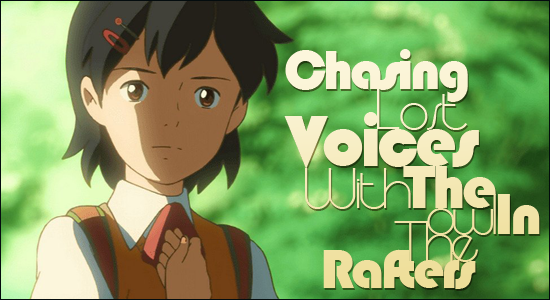
This past May, Makoto Shinkai’s newest feature-length animated film, Hoshi o Ou Kodomo – Children Who Chase Lost Voices from Deep Below debuted in 20 select theaters(including IMAX) across Japan, grossing an approximate US$240,978 on opening weekend, and saw its American debut, complete with English subtitles Saturday, July 30th at Otakon 2011. As one of Japan’s youngest up and coming directors and an independent artist working outside the normal framework of the animation industry, Makoto Shinkai has garnered a lot of critical attention of the past decade, and this film serves to widen the range of his talent and appeal significantly.
His background and career I’ve covered before, and I will in fact cover again in some of the Q&A sessions he was in at Otakon this year, so I’ll skip over the details and just say this: He was a student of Japanese Literature in University, he never studied animation, he never studied art, and he never studied film. In other words, he taught himself everything he knows from scratch. His directorial success has thus been a great surprise to both fans and industry peers alike. Drawing inspiration from Miyazaki in ways that will be fairly apparent when you see the film for yourself, Shikai dives into his first real fantasy adventure.
To be perfectly honest, I am slightly reluctant to be doing this review at all, but I figure this should be done as it is easily the biggest event for me personally -it was the main reason I even went to Otakon at all- as well as to the industry globally this year at Otakon. I say I am reluctant because by writing this as a review and not a simple heralding of praise, or a short recommendation on premise, I will have to spoil some things. For those of you interested in saving the experience for the first time, there have been no signs of a DVD or BluRay release schedule as of yet, but Makoto Shinkai will be at appearing at the NewYork Anime Festival this October 13-16 to screen his film once again, so if you can make it, I would be willing to say the entire convention trip would be worth it. Incidentally if you are going to NYAF then I’m just going to have to ask that you bookmark this article and close this window right now. I’ll see you in late October!
No, really. I wish I could convey how beautiful this film was without ruining certain things, but I’ve resolved to review this in full and simply draw the line where appropriate for those of you who don’t want to see any spoilers. If you truly DO NOT want this film spoiled in any way shape or form, the safest thing I can tell you to do is NOT READ this review. As much as this conflicts with my self interest as a content provider, I would honestly hate to ruin the one and only chance you have at experiencing this story for the very first time by spoiling the story for you. So, if you really want to read on, I will recommend you not go past my spoiler warning, which I will try my damnedest to make unavoidably noticeable, but ultimately the choice is yours. Sound fair? I hope so. Now, let’s get started!
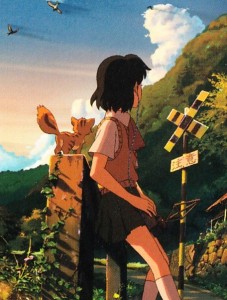 The film begins following a young girl named Asuna in her mundane daily life. Asuna lives in a small rural town in the cradle of a mountain range during what I believe is the late 70s or early 80s in Japan. She is the only child and her mother works as a nurse in the next town over, her father died when she was young. She is an exceptional student, and while friendly with her classmates, not closely involved with anyone in particular. Her one constant companion is a little orange-stripped cat named Mimi. Nothing bad happens to her, but nothing of interest does either: she is the model average girl living a carefree, normal life.
The film begins following a young girl named Asuna in her mundane daily life. Asuna lives in a small rural town in the cradle of a mountain range during what I believe is the late 70s or early 80s in Japan. She is the only child and her mother works as a nurse in the next town over, her father died when she was young. She is an exceptional student, and while friendly with her classmates, not closely involved with anyone in particular. Her one constant companion is a little orange-stripped cat named Mimi. Nothing bad happens to her, but nothing of interest does either: she is the model average girl living a carefree, normal life.
The town itself and the surrounding wilderness are painted in exquisite detail and with Shinkai’s iconic use of lighting. The town itself is beautifully detailed as a character all its own. In a country like Japan, where constant cultural and geographic change over the years has left the country with very few architectural relics, the town in Childen Who Chase Lost Voices speaks quite loudly of Japan’s history since WWII. At first glance it might be indistinguishable to Western audiences, but the rustic and patchwork look to the architecture and some of the passing landmarks around the town and its outskirts pull very distinctly on feelings of nostalgia from its Japanese audience. (I wish I had some decent picture of the town but all I have to work with are screenshots from trailers.)
While following Asuna’s daily routine, we see that Asuna’s mother sleeps through the afternoon between getting home from her shift at the hospital in the early morning and leaving again at night. While her mother is effectively absent, Asuna ventures out of the town into the surrounding mountains after school, where she has made herself a little hideaway in an abandoned bomb shelter near a cliff. She makes herself a little lunch at home after returning from school before running away to her perch overlooking the town where she listens to a small crystal radio her father left her. Through it she hears a strange melody that seems almost like a message from some far off place, sad, longing, and lonely.
For those who don’t know, crystal radios (aka cat’s whisker radios) are simple radio wave receivers that were a popular trend with kids during the 1920s and later in the 1950s when the first generation of hobbyists revitalized the trend in their own offspring. The beauty of crystal radios is that they utilize only a wire antenna, wire coil in closed casing, a crystal detector, and earphones (all remarkably simple devices to create on a child’s budget) without any electrical power to pick up AM radio waves from within around a 40km/25m radius and transmit audio through a small speaker like an earphone. Other than being a cheap and effective way to teach physics was and though to a lesser extent now’days still is the subject of DIY hobbyists around the world.
The radio’s crystal can be seen from the town below with a distinctive glimmer in the sunlight and one day that same glimmer can be seen from town while Asuna is still in school. When classes are dismissed for the day, an announcement over the loud speaker urges children to hurry directly home and avoid the outskirts of the town, as there have been sightings of a bear. Asuna’s curiosity gets the better of her and she ignore this, rushing off to her usual spot. On the way she encounters said bear, which is in fact not a bear at all. The “bear” is a furry creature roughly the size of a car, with bear-like claws and a very not bear-like face with a mouth big enough to engulf a person whole and lined with sharp teeth. It is also host to almost fungi-looking growths colored in yellow, green, blue, and red.
Frozen in fear at sight of the bizarre creature Asuna is rescued at the last minute by a mysterious young boy wearing a pendent with a crystal just like Asuna’s. He distracts the bear and tries to get Asuna to run, but she cannot. The boy fights with the monster himself and is struck in the arm in the process. He shows clear reluctance towards killing the monster and tries to reason with it briefly to no avail. When the monster attempts to strike the boy down for good, the shining crystal pendent emits a magical light that blows the monster’s face apart. In its wounded state the monster then staggers about the bridge they are on before being hit by a train and falling into the river below where the corpse is carried far downstream.
The boy grabs Asuna and together they take off on a very Miyazaki-esque sequence of the boy making spectacularly inhuman leaps and bounds through and indeed over the thick forests of the mountains, eventually they reach Asuna’s hide away and the boy introduces himself as Shun. Asuna wraps Shun’s wounded arm with her school uniform’s neckerchief and the two spend the afternoon together. Even Mimi takes an unusual liking to Shun as he speaks of a strange far off land called Agartha. As sunset falls, Shun kisses Asuna on the forehead and says goodbye. Flustered and overcome with a mix of embarrassment, confusion, and joy, Asuna hurries home to bed flustered and in love.
I feel like this aspect of the relationship might seem off at first to a lot of people and may even be the first major subject of criticism for people just looking for something to complain about, but I think it’s important to note that this is not meant to be a deep or meaningful relationship to either character. Asuna is a young girl and her crush on Shun is meant to seem sudden and naive.
Often in fiction,(and let’s not kid ourselves just as often in real life) the “meaning of love” is often fought over between shortsighted ideas of what it means to be free or happy or fulfilled, and seemingly callous plans for the future based on promises of stability both emotional and financial, but this is something much simpler than that and there really is no meaning to their love. Asuna’s love is the emblematic first love in that it happens suddenly, without warning or reason, and with almost irrational strength behind it. Asuna finds herself in love with Shun only because he is there and brings her a sense of happiness that she cannot explain and really doesn’t even want to. Her romance isn’t built upon or driven by thoughts of marriage, sex, or money. All Asuna can think about is seeing Shun again and being happy for just one more day at a time.
Of course this is the part where Shun, still accompanied by Mimi, takes the time to reflect on his own mysterious situation and after seemingly coming to terms with what little time he has left in the world, falls from the cliff over looking the town and outlying forest. When Asuna returns the next day, she finds Shun is no where to be found and despite heavy rain, waits for Shun until nightfall in her cold, dank, little bomb shelter hideout. When she returns home, her mother comes rushing to meet her at the door and embraces her in tears. A boy’s body was found in the river with Asuna’s neckerchief tied around his arm.
Scattered around the nature scenes of the path leading up to Asuna’s hideaway Shinkai manages to litter quite a bit of symbolism. The most obvious of which might be that on her way back down in the night (if I recall correctly) the camera focuses for just a moment on two dragonflies mating, and on her way back up the next day, the male is gone. Obviously the mating only takes so long and the male has simply left, but the immediate iconography should be obvious.
In his previous films Shinkai has used trains as a symbol of the distance between places, the idea that any amount of time on a train would be impossibly long to travel on foot by modern standards, and so comparatively the person making the journey is impossibly small in relation to the distance separating them. In this film he has only one actual train but the presence of train tracks nestled in between thickets of trees and high above the rushing river makes for a distinct image of isolation, where that great distance via train is the only way in or out of the town and yet the tracks seem to go on forever without leaving.
Also returning is his use of birds. Previously Shinkai has used lone, small, migratory birds as another symbol of great distance and also of change in time accompanied by the passing of seasons. In this film however we see whole flocks of birds flying through the initial setting, symbolizing the state of the people in the town, unified and familial; the town is where the people live and where the families are, to leave the town is to leave that place of belonging, which of course comes into play later, though it is not as apparent a consequence at first.
Another symbol that appears briefly in the film is a red spider lily by the side of the road in the foreground as Asuna rushes to her hide away to find Shun. Like the use of migratory birds, lycoris flowers are tied to Autumn and so the symbolic coming of death, but the flowers themselves are seen as symbols of death throughout Japan as well as mainland China said in some stories to guide the dead toward the afterlife or toward reincarnation, and in others they are said to blossom along paths where two people meet who are destined never to see each other again. Appropriately they manage to act out both myths in some respects.
Also perched on the red spider lily is a black swallowtail butterfly. The butterfly is of course a symbol of metamorphosis and growth, this of course includes nonphysical change as well as change in outward appearance. A black butterfly is often symbolic of death: said to forewarn death on the homes it stays in, and in some myths said to guide the dead into the afterlife, or in other interpretations are themselves the souls of the dead. In any case the butterfly itself takes flight from the spider lily for just a moment before the scene cuts and in doing so symbolizes the beginning of a journey into the other side of death.
Getting back to the story, we see signs of two different people nosing around the remains of the incident surrounding Shun and the monster that Asuna saw. The first is a young boy in a tribal outfit and traveling cloak and mask who picks up Shun’s crystal pendent from his body before it was found, and the second is a group of men who investigate the body of the monster that washed up further down stream. The leader of the men nosing around the monster’s corpse shows up after Asuna learns of Shun’s death as her new teacher, Mr. Morisaki. During his lectures he speaks about the various ideas of the afterlife and the land of the dead in world mythology. Of these different incarnations of the underworld, he mentions the name Agartha.
Asuna visits Morisaki at his home, a small apartment crammed floor-to-ceiling, wall-to-wall with books on mythology of the afterlife. They speak briefly about how every story of bringing the dead back to life ends in tragedy as a cautionary tale against harboring such desires in the living. Death is a natural part of living and cannot be reversed or overturned. This moral is quickly overturned in Asuna’s mind however when she sees a familiar sparkle in the light of the sunset when leaving Morisaki’s apartment. She rushes to the point where she last saw Shun to find a familiar figure standing there.
This boy looks and sounds exactly like Shun, and for a while Asuna questions whether he really is Shun or not. The boy reveals himself to be Shin, Shun’s younger brother. The two are interrupted when armed military men storm the peek apparently looking for Shun’s pendant. In an action packed and symbolic reenactment of Asuna’s first encounter with Shun, Shin grabs Asuna and the two leap from the very cliff Shun fell and died. They race through the forest with the men in pursuit until finally they arrive at a cave deep in the woods. One of the armed men follows them into the cave before betraying his comrades and locking himself and the two children inside.
The man reveals himself to be Morisaki and in a desperate attempt at thwarting Morisaki’s schemes Shin leaves Asuna and uses his brother’s pendent to open a gate in the cave wall. Morisaki quickly realizes that Asuna still has her father’s radio crystal with her and that it is another key to the other world. The two confront each other with their motivations -Morisaki reveals that he once fought in a war overseas but lost his wife to a crippling illness while he was away and he has spent his life ever since trying to bring her back, and Asuna questions just how strongly she wants to see Shun again- and together they cross over into Agartha, the world of the dead.
Mimi goes with them and actually helps out when they come across another monster like the “bear” but this time in the form of an something like a deer or antelope. When the guardian monster -part of a race of beings identified by Morisaki as Quetzalcoatl, named after the feathered serpent of mesoamerican mythos- blocks Asuna and Morisaki’s path, Mimi approaches and appears to communicate with the guardian to let them through.
I should note that not being there to witness a death is a reoccurring theme of this film. Bearing witness to death is a very heroic kind of traumatic experience that is used in fiction as a way to force characters to grow and move past the fear of death and loss, realistically however we are very rarely present for most of the deaths in our lives and this helplessness and inability to say goodbye is a painful, and uniquely unheroic way to experience the death of a loved one.
Once on the other side, they find a great wide expanse of open field stretched out to the horizon where it meets an equally vast sky. The beautifully painted plains serve a perfect contrast to the sleepy little mountain town Asuna came from. The dark, full, green walls of the wooded mountain side are replaced with wide endless open fields of light, soft hilly grasslands. Where as the little town felt like the whole world was contained in that mountain cradle, Agartha’s horizon seems to go on forever. In the sky they spot a peculiar sight, a gigantic arc covered in beautifully elaborate decor drifting across the sky above them.
![]() OK HERE IS WHERE YOU STOP. I know this seems like an awkward place to cut you off, but that’s just how this is going to go. The film, as Shinkai himself describes, follows his previous films’ trends of loss and separation between lovers, but takes those themes a step further in touching on coping with loss. Due to this theme the rest of the film is where we really hit the meat of things and subsequently where we see most of the bigger revelations in both plot and characters. I cannot let you pass here in good conscience if you have any expectations for this film. Once again -and I do apologize for the redundancy, but I feel it is called for- if at all possible I would like to strongly encourage you to patiently wait things out until the film sees an official international release in either select theaters or straight to DVD/BluRay, but if none of this has dissuaded you from continuing on yet, then I’ll keep going. Please, place all carry on bags and electronics in separate trays, empty all pockets, remove all metallic objects from your person, and step across the line…
OK HERE IS WHERE YOU STOP. I know this seems like an awkward place to cut you off, but that’s just how this is going to go. The film, as Shinkai himself describes, follows his previous films’ trends of loss and separation between lovers, but takes those themes a step further in touching on coping with loss. Due to this theme the rest of the film is where we really hit the meat of things and subsequently where we see most of the bigger revelations in both plot and characters. I cannot let you pass here in good conscience if you have any expectations for this film. Once again -and I do apologize for the redundancy, but I feel it is called for- if at all possible I would like to strongly encourage you to patiently wait things out until the film sees an official international release in either select theaters or straight to DVD/BluRay, but if none of this has dissuaded you from continuing on yet, then I’ll keep going. Please, place all carry on bags and electronics in separate trays, empty all pockets, remove all metallic objects from your person, and step across the line…

Once in Agartha, Asuna and Mr. Morisaki spend some time wandering across the vast landscape while Shin reports back to his chief elder that he has successfully retrieved his brother’s key from the outside world. The elder scolds him however, for having let two outsiders into Agartha via a second key. Shin is ridiculed for not living up to his brother’s potential and for being unable to speak with the spiritual voices of the crystal, which are revealed to be source of the song Asuna had heard while on the surface.
Shin’s inability to commune with the stone is attributed to his brash, emotionally driven nature, and subsequently his inability to cope with his brother Shun’s death. Shin is thus tasked with finding them and getting rid of them by whatever means necessary and sent riding off toward the endless horizon on horseback. Preparing for their first night in Agartha, Asuna and Morisaki set up camp under the majestic stonehenge-like ruins scattered across the land and Asuna takes a moment to reflect on how being with Morisaki and having him look out for her must be what having a father is like.
Once night falls and the two go to sleep, Asuna begins having a nightmare which is tied to a monster watching over her as she sleeps. Mimi, the cat witnesses the monsters take form from the shadows and attempts to fend them off but is thrown against a wall and incapacitated as the monsters take Asuna from the campsite and bring her to the ruins of high walled buildings where they leave her with another prisoner as the sun rises. It turns out the monsters can only move in the shadows and cannot traverse in daylight or through water and kidnap and devour humans, but are particularly drawn to outsiders. The other prisoner is a little girl, younger than Asuna, who was kidnapped from an Agartha village.
The two attempt to escape their imprisonment before the afternoon sun falls and begins to cast shadows from the high walls, and are nearly captured again when Shin, who was finally given a glimpse of the crystal’s voice and followed it to Asuna, appears to rescue them. Shin does his best to fight off the monsters but is seriously wounded before Morisaki -who I should remind you is still carrying firearms- and Mimi arrive to rescue Shin, who was rescuing Asuna, who was rescuing the little girl.
The party manages to escape back to the little girl’s village where they are initially met with fear and hostility as the village warriors (three large men with swords) attempt to run the outsiders out of the village. The little girl’s grandfather appears to call off the warriors and offer them sanctuary however and Shin has his injuries tended to while Morisaki probes the elder for information.
The old man explains that it is forbidden among the ancient people who live in Argartha to bring the dead back to life, but there is in fact a way to do so. He describes the violent history of Agartha, in which every great empire on the surface throughout history, from the Greeks, to Romans, to Persians, Byzantines, Knights Templar, to Conquistadors and the Nazis found their way in at some point and oppressed Agartha’s people in search of immortality.
Morisaki makes it clear that he isn’t about to give up on his quest to bring his wife back from the dead, and so the old man finally gives in and tells Morisaki what to do: if he continues in a certain direction he will reach a place known as Finis Terra(literally “End of the Earth”), and there is where the gods and the great arc of the divine reside. If Morisaki were to approach the arc when it lands, he could request his wife be brought back to life. Morisaki wastes no time and is ready to leave the next morning. With Shin still in bed recovering, Asuna must choose to follow Morisaki and leave Shin to the villagers.
With a boat from the village Morisaki, Asuna, and Mimi begin to leave for Finis Terra, but just as they leave the pier Mimi suddenly leaps from the boat and turns to watch Asuna from the pier. Asuna is at first taken by surprised and begs Mimi to come back to her, but Mimi only sits and stares as Morisaki keeps the boat moving. Asuna begins to cry as she watches her ever-present childhood companion drift away and asks the little girl to take good care of Mimi for her until she comes back. Once the outsiders have left the three village warriors from before, led by a man with a scar across one eye follow after them on horseback.
As the two continue their journey towards Finis Terra, Shin wakes up and stubbornly insists upon leaving to catch up with Asuna and Morisaki in spite of his wounds. With the heroes all gone we are given one last glimpse of the village as the little girl comes running to her grandfather sobbing. Taking her grandfather into the next room we find that Mimi is lying still. The grandfather tries to comfort the young girl and explains that Mimi has fulfilled her role as Asuna’s guardian and that it was simply Mimi’s time to pass on.
The two take Mimi’s body to the edge of the village where they leave it on a small rock altar. One of the Quetzalcoatl, this one in the shape of a man, comes and devours the body. The grandfather explains that this is simply the natural order of things, and that now, even in death, Mimi will continue to serve a greater purpose as a part of the Quetzalcoatl.
While a bit obvious, this is of course one of the major themes and messages of the film: that death is a natural part of life and shouldn’t be denied or fought against, but accepted as an unpleasant but inevitable facet of life that everyone must learn to cope with at some point.
I have to apologize I don’t quite remember exactly in what order this part started, but I believe it was the warriors that were the first to catch up with Morisaki and Asuna, and then just as Morisaki draws his gun Shin arrives and tells the other two to run while he holds off the swordsmen.
The three grown men confront Shin, who is at this point still wounded and armed with only a dagger, and what follows is possibly one of the best choreographed fight scenes I’ve seen in an animated film in quite some time. The animation was smooth, the pacing was almost too fast in that by the time the fight was over I reached for my nonexistent remote control to rewind and see it again, and the choreography of both the sword fighting and the hand to hand combat were very noticeably grounded in live action influence rather than taking inspiration from other anime or pure fantasy.
In any case Morisaki takes Asuna and runs for Finis Terra while Shin fights the three swordsmen alone. By the time the duo reaches the enormous sheer drop hundreds of feet down night has begun to fall. Morisaki begins climbing and tells Asuna to follow before the monsters come out, but faced with the giant chasm, Asuna’s legs go weak and she can’t find the courage to climb down. Morisaki climbs back up for a moment and tries to talk her into making the climb down Finis Terra, but Asuna can’t do it.
Finally, Morisaki resolves not to waste any more time before nightfall and takes Asuna’s crystal and leaves his gun with her, telling her to follow the river back to the village before making the climb himself. Night sets in and Asuna finds herself cold, alone, and frightened as she wanders back up stream. The monsters appear around the banks of the stream in droves and they all watch Asuna with glowing red eyes, murmuring “kill” and “devour” as she continues her lonely journey.
There is a slightly trippy nightmarish sequence where the sense of time during the journey gets a little muddled and she finds herself out of the stream and in a dried puddle surrounded by monsters. The monsters attempt to devour her and she tries to defend herself with Morisaki’s pistol but to no avail. At the last minute Shin appears and tries to fight off the monsters, but in his weakened state he only does so well. Fortunately the sun rises and several of the monster burst into flame while the others retreat into the shrinking shadows.
Asuna and Shin spend the morning talking with eachother about Shun. Shin looked up to him and strove to live up to his brother, but with him gone his goals have vanished. Shin’s talk gets Asuna to start thinking about what she really loved about Shun and after her happy flashbacks of Shun turn into flashbacks of her mother when her father died when she was young she finally realizes just what she was looking for all along, and in some regard what we all look for in love: companionship.
After losing her father and with her mother’s work, Asuna spent her life, not in total isolation, but with a distinct sense of loneliness up until she met Shun, and for that short day in which she knew him she realized that all she wanted was to not be alone anymore. And really, beneath the ego stroking and the vanity, isn’t that the one thing anyone wants from a real relationship? The promise of not being alone?
The two both come to terms with Shun’s death and come to the realization that the one final wish of the dead is for their loved ones to go on being happy. Asuna and Shin then call upon the aide of one of the Quetzalcoatl to carry them down to the base of Finis Terra so that they can find Morisaki and bring him back.
Before they can find Morisaki however we already see that he has already invoked the arc and summoned forth the god of Agartha. He wishes for his wife to be reborn and the god takes one of Morisaki’s eyes as tribute, but produces only a bizarre slime. Morisaki questions what more he is to sacrifice for the god to return his wife to him, and at that moment Shin and Asuna appear and Asuna calls for Morisaki. Having come too far and too close to turn his back on his life’s dream now, Morisaki sacrifices Asuna and she begins to transform into his wife.
Shin is outraged and at first attempts to stop Morisaki himself, but quickly turns his attention to Asuna’s crystal that had been used to call down the god from the arc in the first place. By breaking that crystal the god recedes back into the arc and leaves, and without the resurrection process completed, Asuna begins to revert back to herself. In her last moments of consciousness, the spirit of Morisaki’s wife also wishes for him to move on with his life and find happiness somehow.
So, in the end Asuna, Shin, and even the now one-eyed Morisaki walk away from Finis Terra together. The end is not a definitively happy ending so much as it is a new beginning. The trio are not quite ready to live happily ever after, but they are ready and willing to go out and search for their happily ever after.
If you’re here, reading this, then you did it! You made it through this whole monster of an article, despite my warnings and discouraging. (Unless you saw the movie already, in which case it’s ok.) I hope this hasn’t ruined the film for you if you really do intend to go into watching it with high expectations, and I hope that if you read this with no knowledge of Makoto Shinkai’s work nor expectations of this film, that I’ve planted some seed of intrigue in you that might blossom into a healthy curiosity or interest in seeing the film for yourself when it eventually hits Western shelves or theaters.



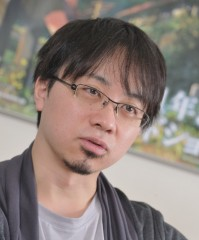
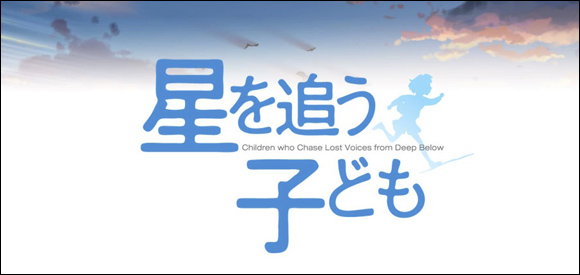
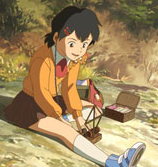
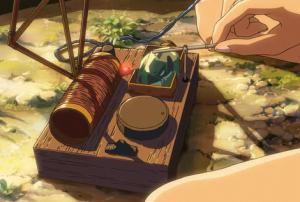
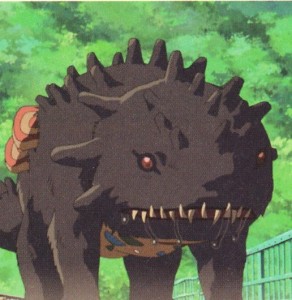
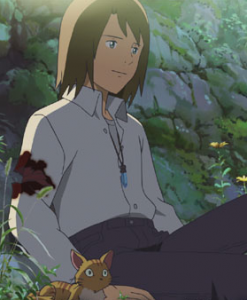
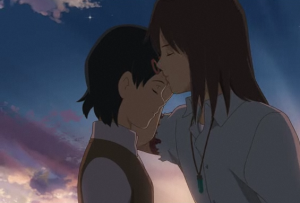
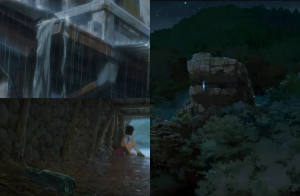
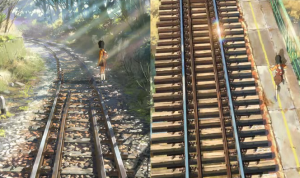

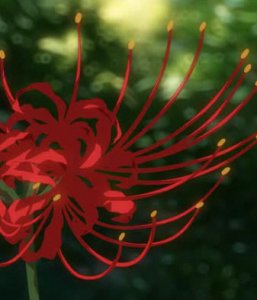
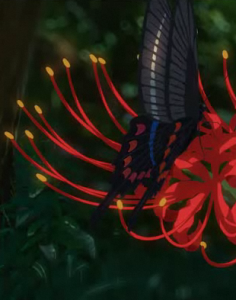
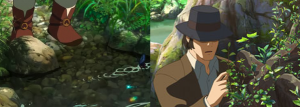
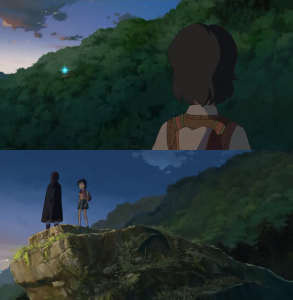
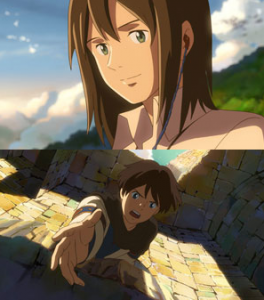
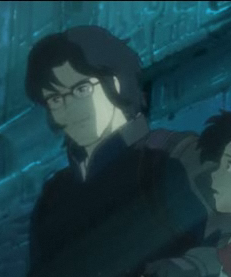
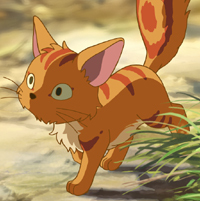
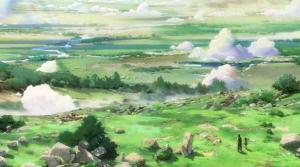
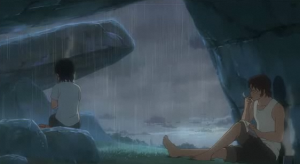
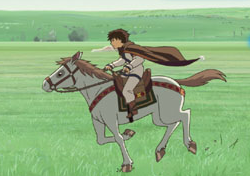
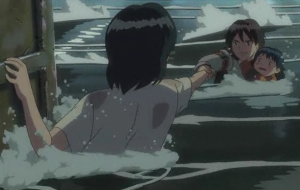
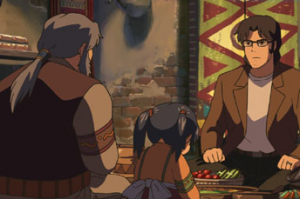
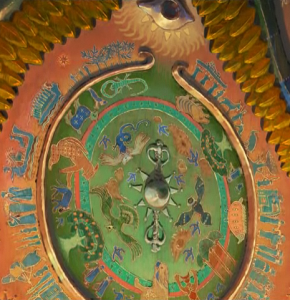

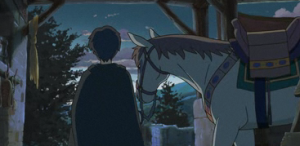
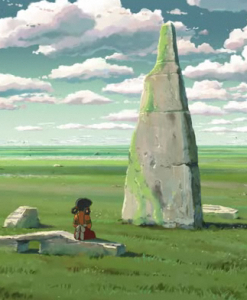
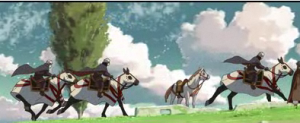
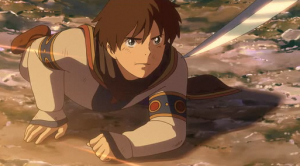
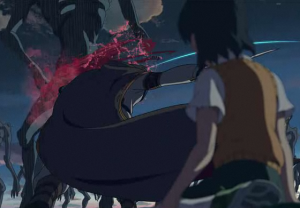
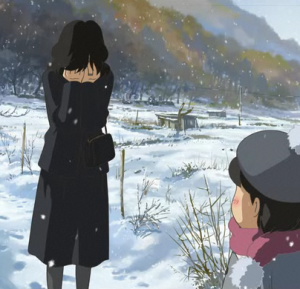
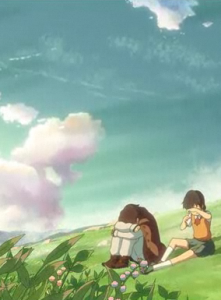
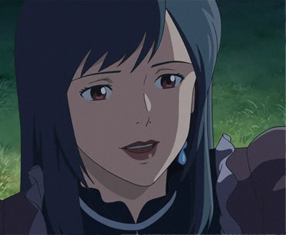

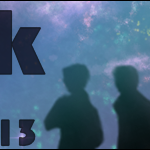
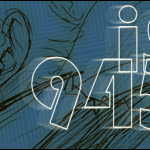
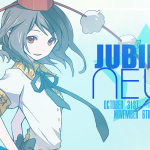








Thank you for your honesty. I stopped reading exactly where advised to avoid spoilers. I’m really looking forward to seeing this!
And thank you for being so cautious. I do hope this film comes out sooner than later so more people can see it. It’s one of those films where seeing for the first time really is its own unique experience.
Hello there! I also read up to the point where you told me to stop. I’m excited about getting to see this movie! We recently met at Anime World Chicago (perhaps you’ll recall my lavender hair) and when I read your article, I could hear the same excitement and passion as when you spoke during your first panel. Keep up the good work, and I hope to see more. You did sign up to do another panel, right? *nudge nudge*
Of course I remember you! I am already going over panel ideas for AWC as well as other cons. If I can get some solid ideas down, complete with titles and synopses I can start emailing panel programming staff.
Also did some more research on the availability of this one. If it’s anything like 5 cm/sec, it doesn’t look like my beloved Crunchyroll will have this for quite some time. I guess I’ll have something else to look forward to. Perhaps by the time Acen comes around…
Yeah, for the time being it seems like Makoto Shinkai is still touring conventions and film festivals around the world. It debuted in theaters in Japan in May so I’m guessing it won’t be hitting the net and DVD/BluRay until maybe October at the earliest.
[…] Shinkai, whom I have covered once already, and recently a second time for the English premiere of his latest film at Otakon 2011. This is not a Shinkai film however, the director was one Morita Shuhei, who also […]